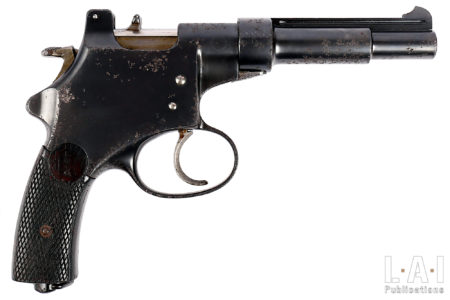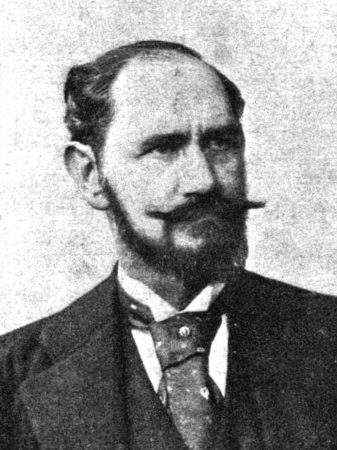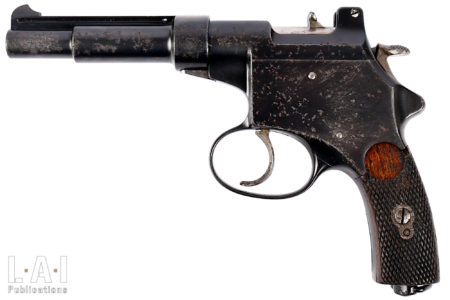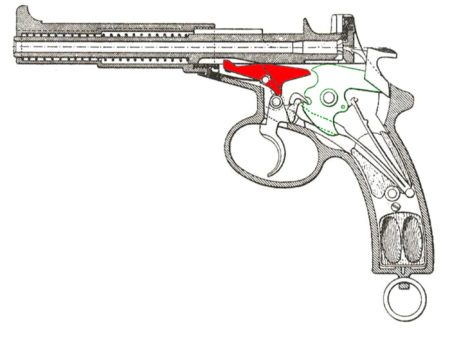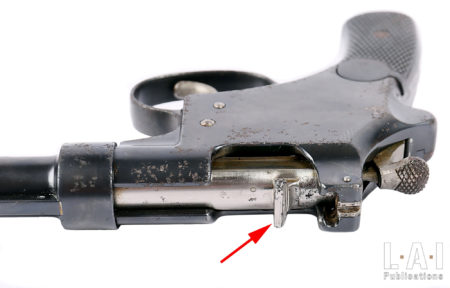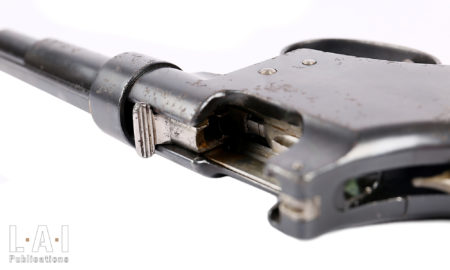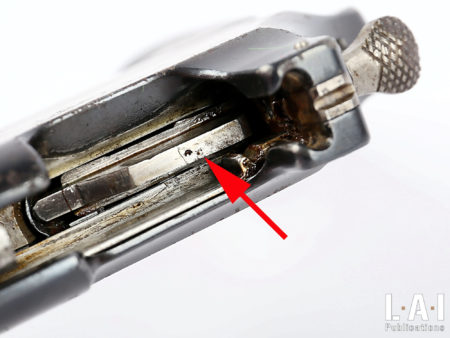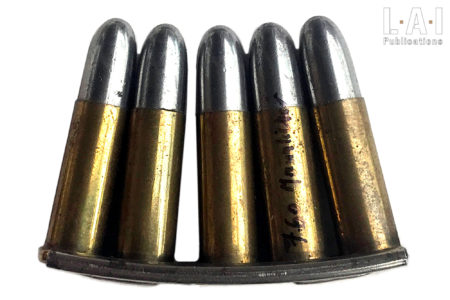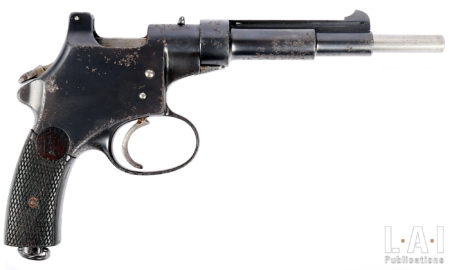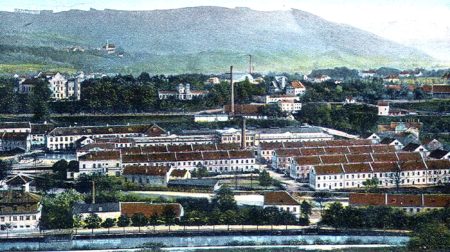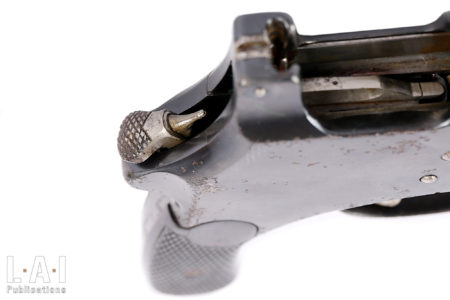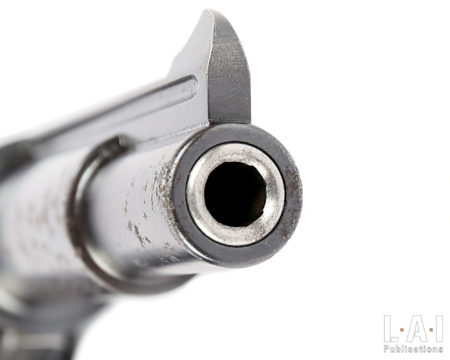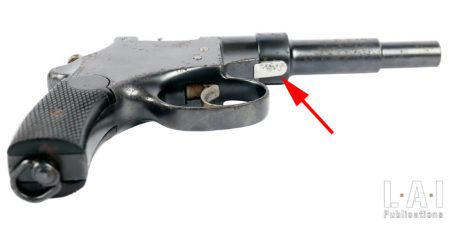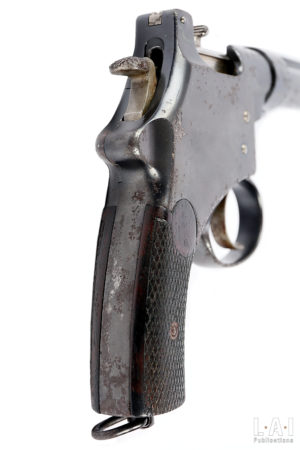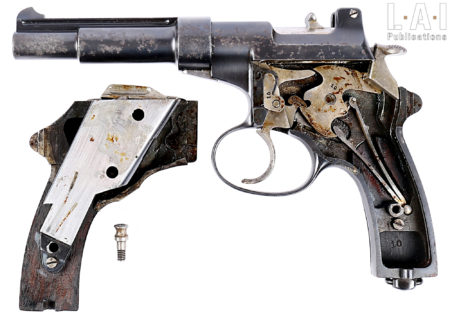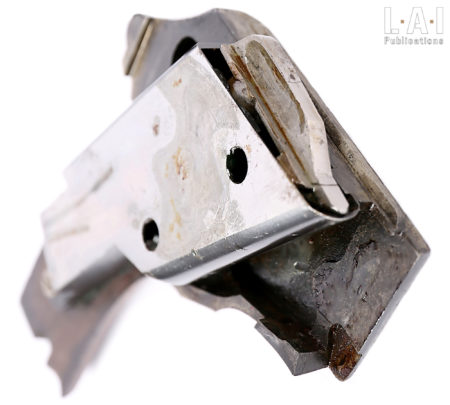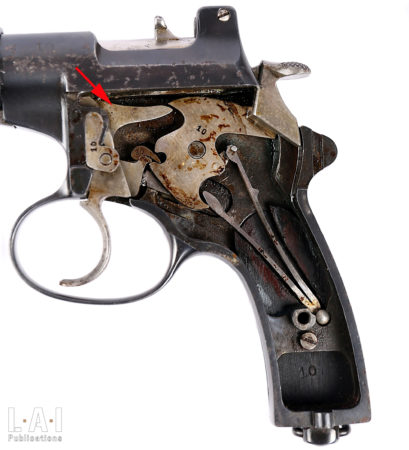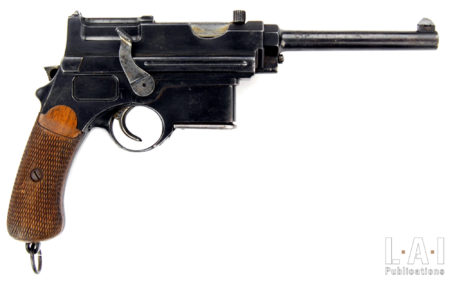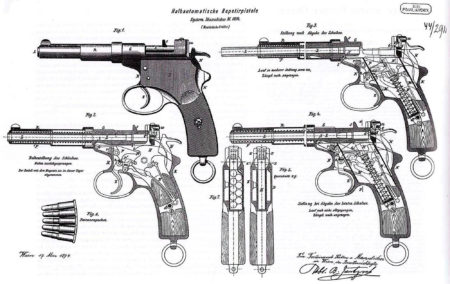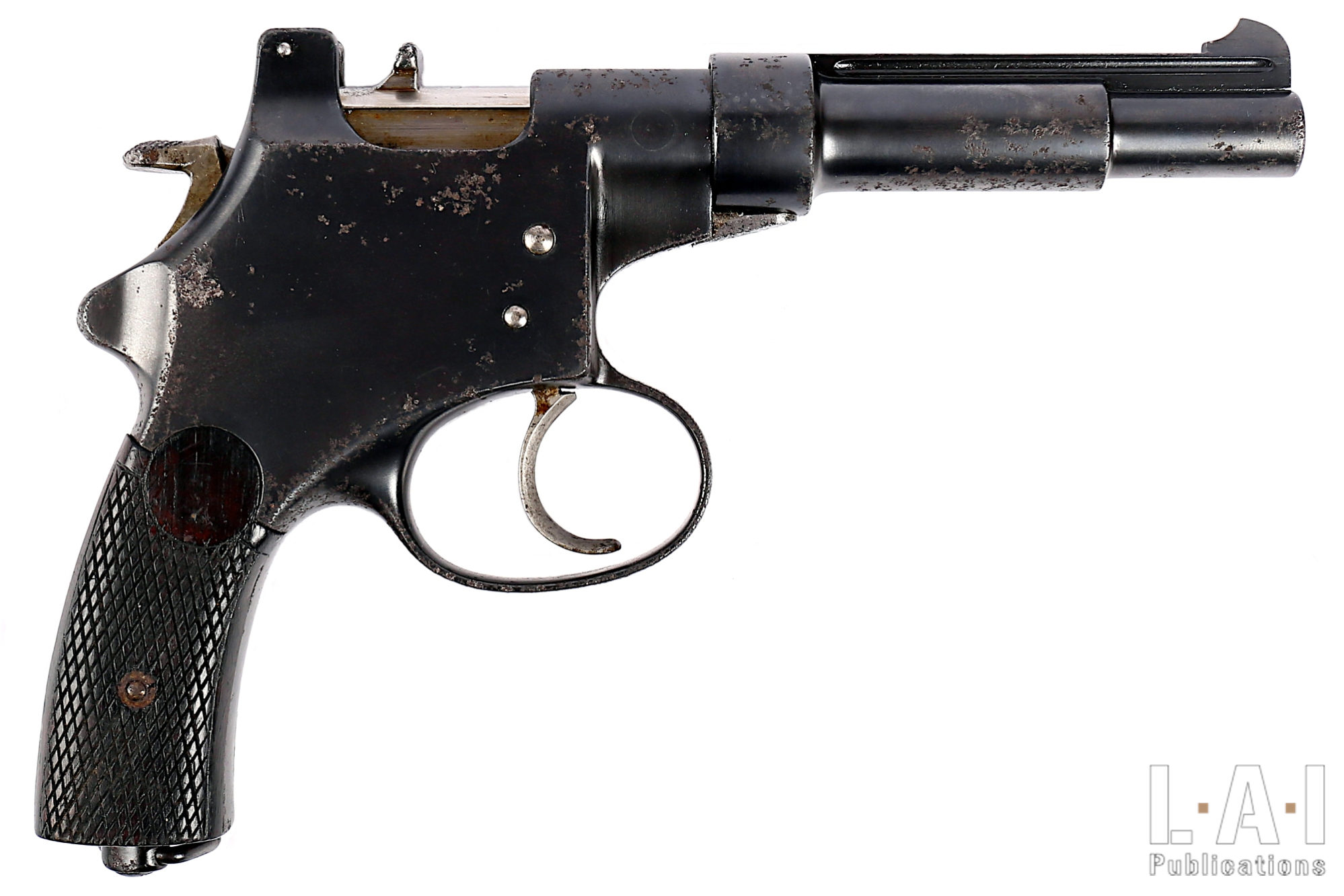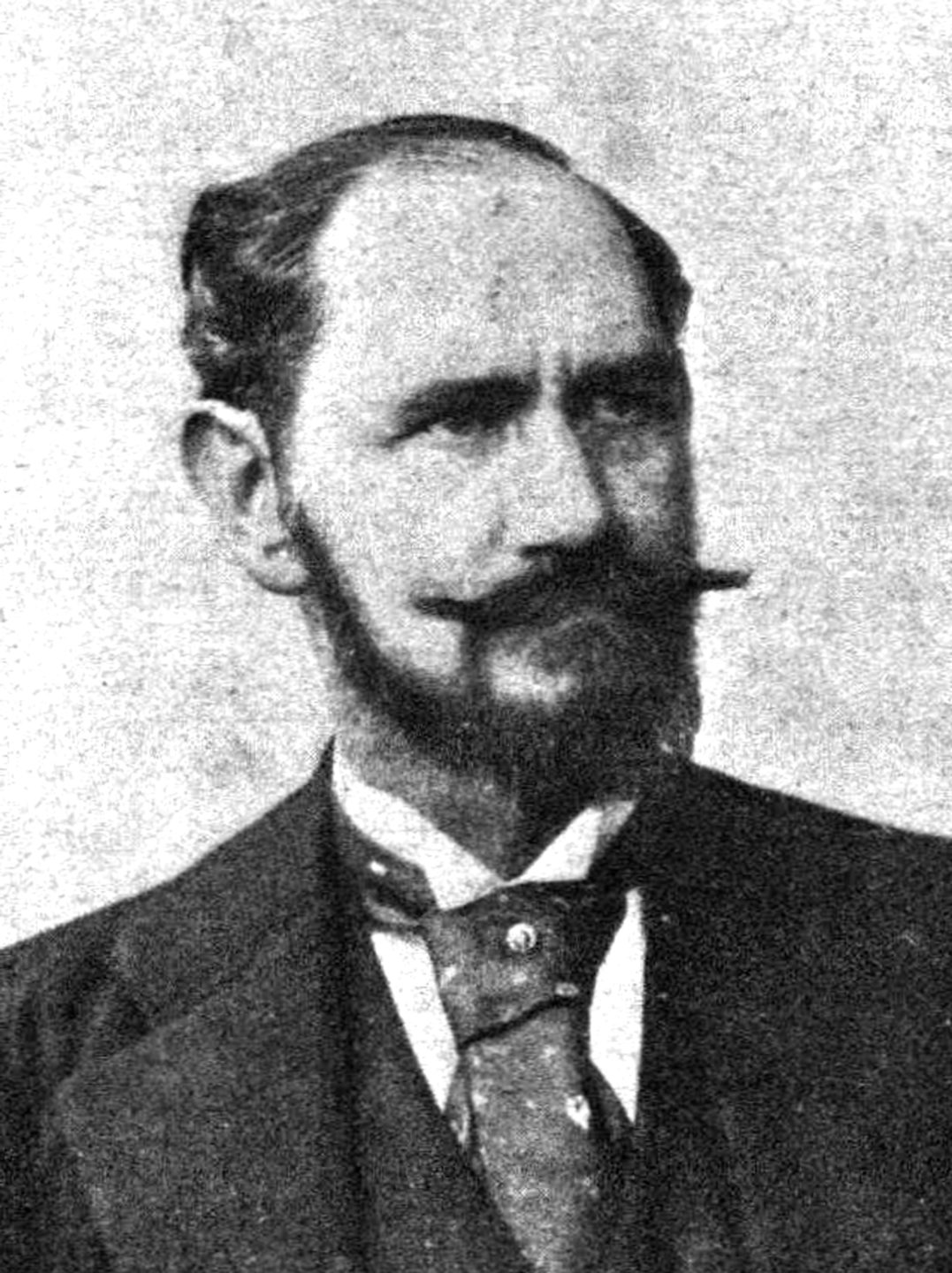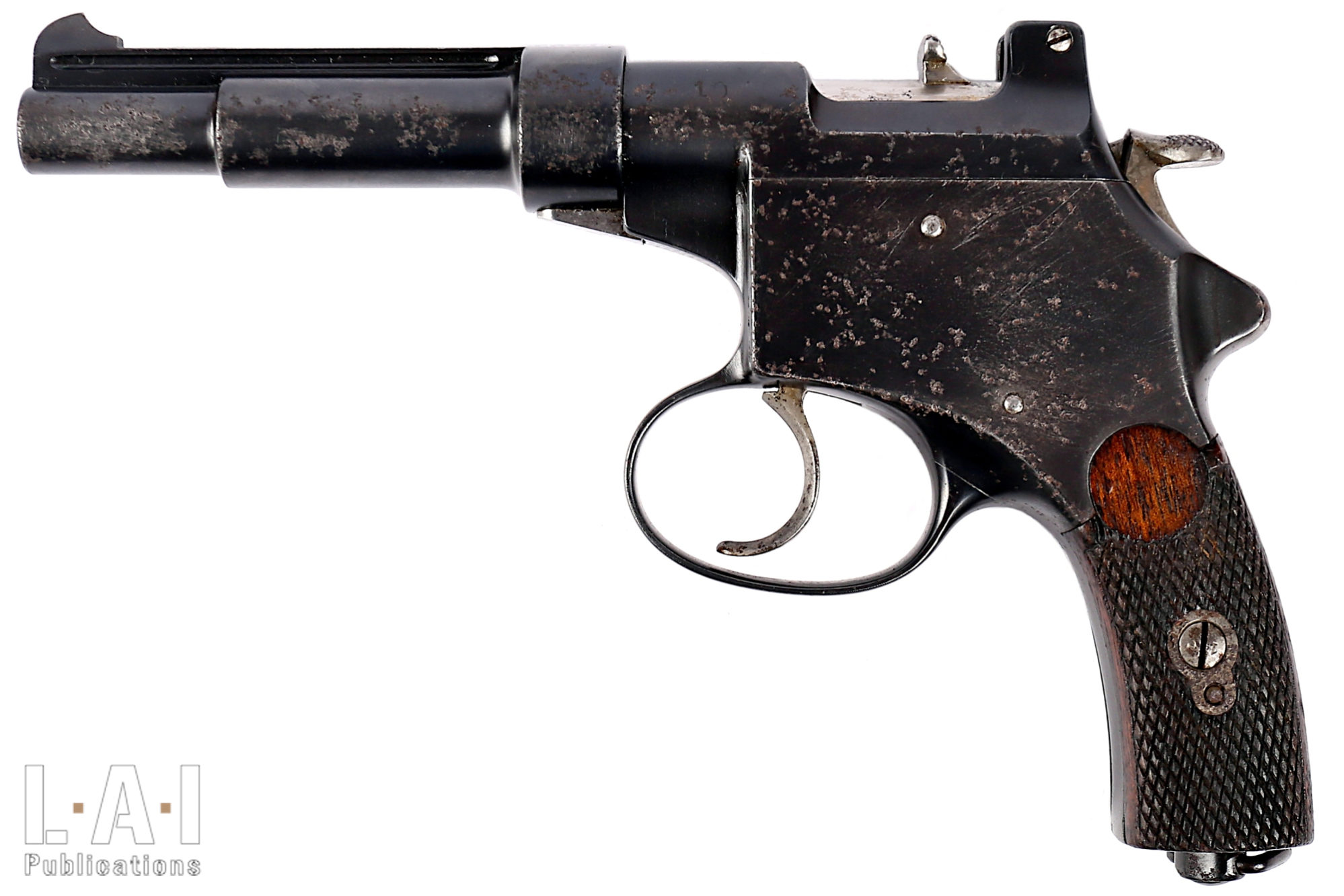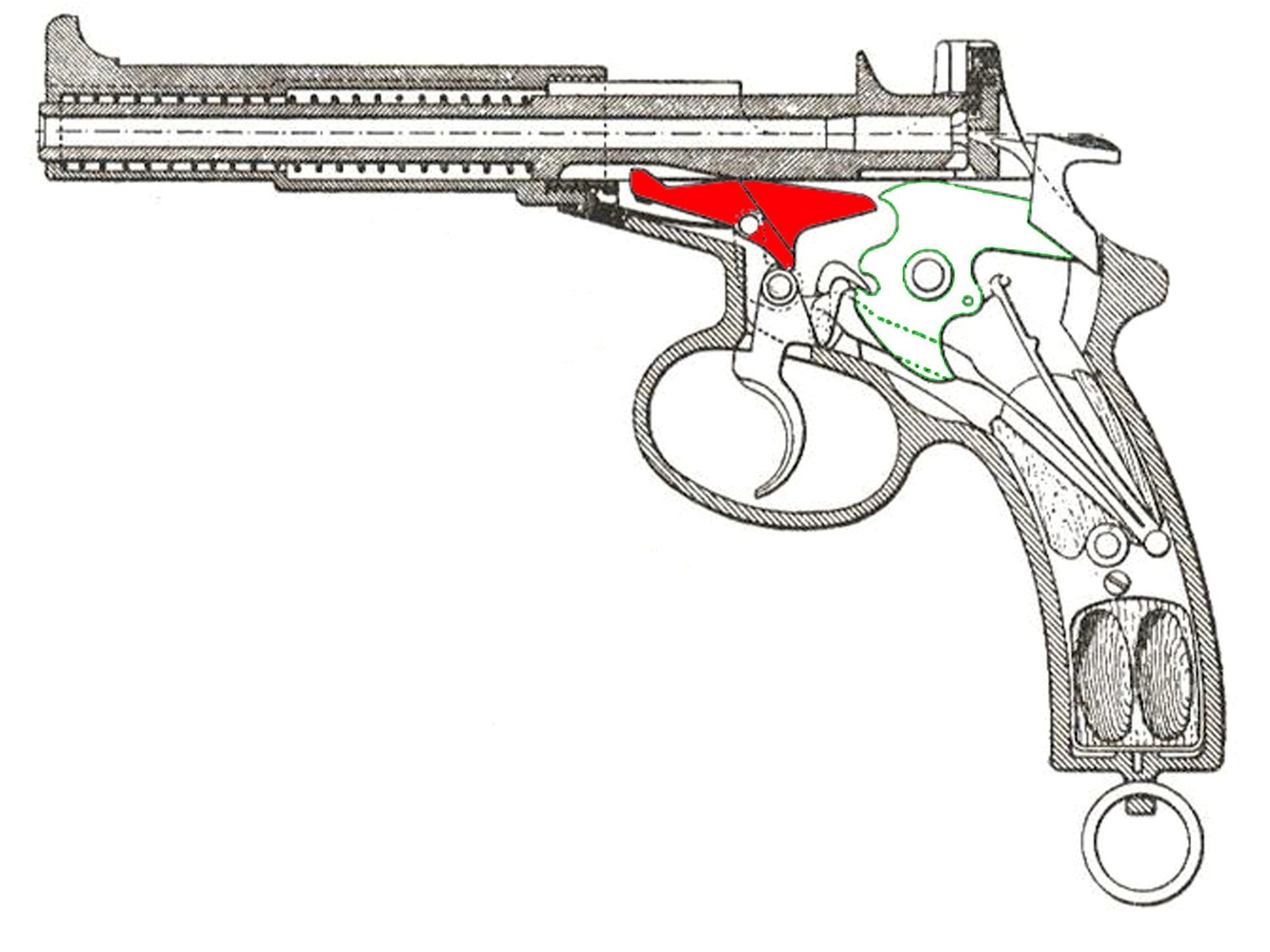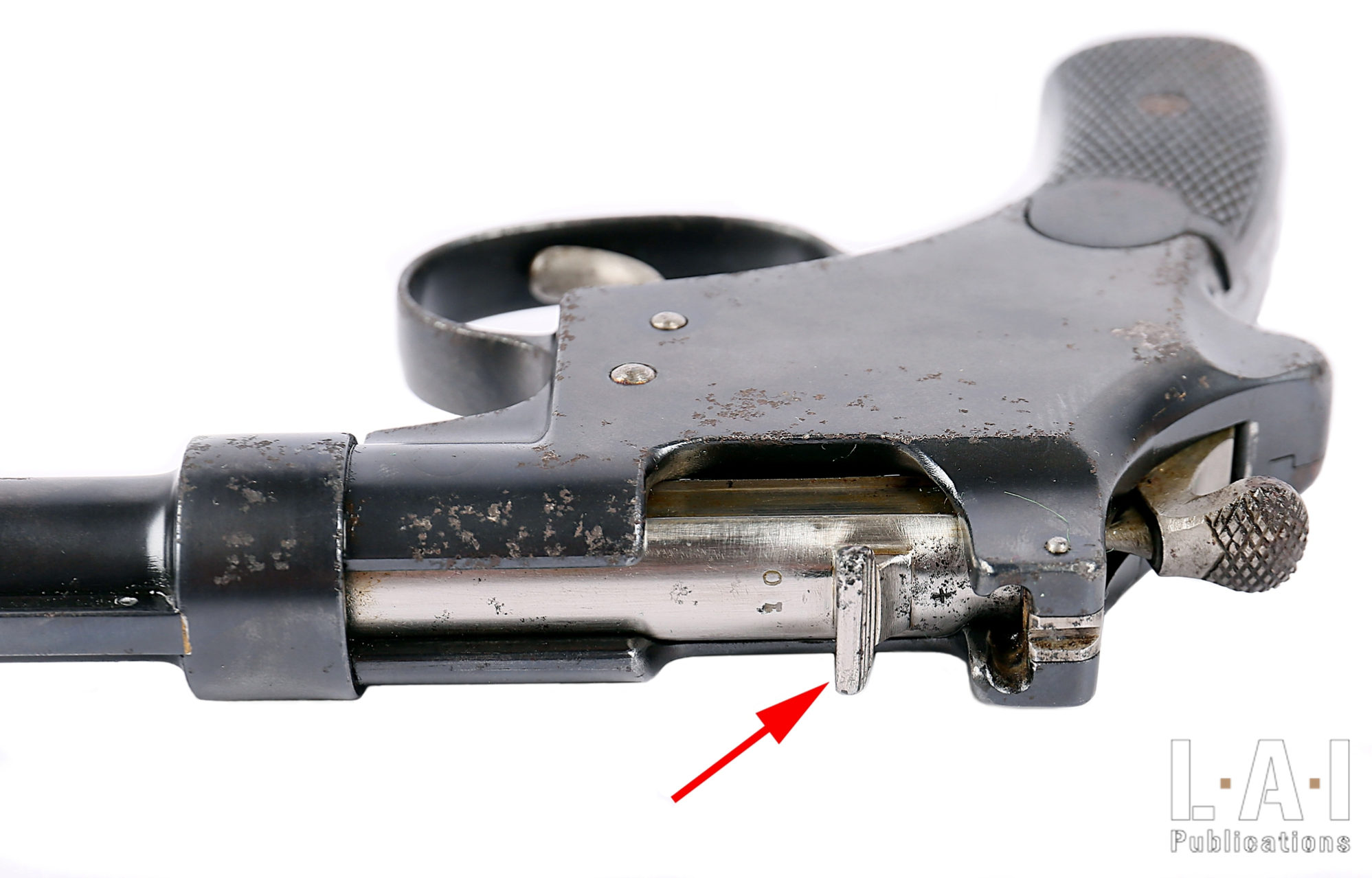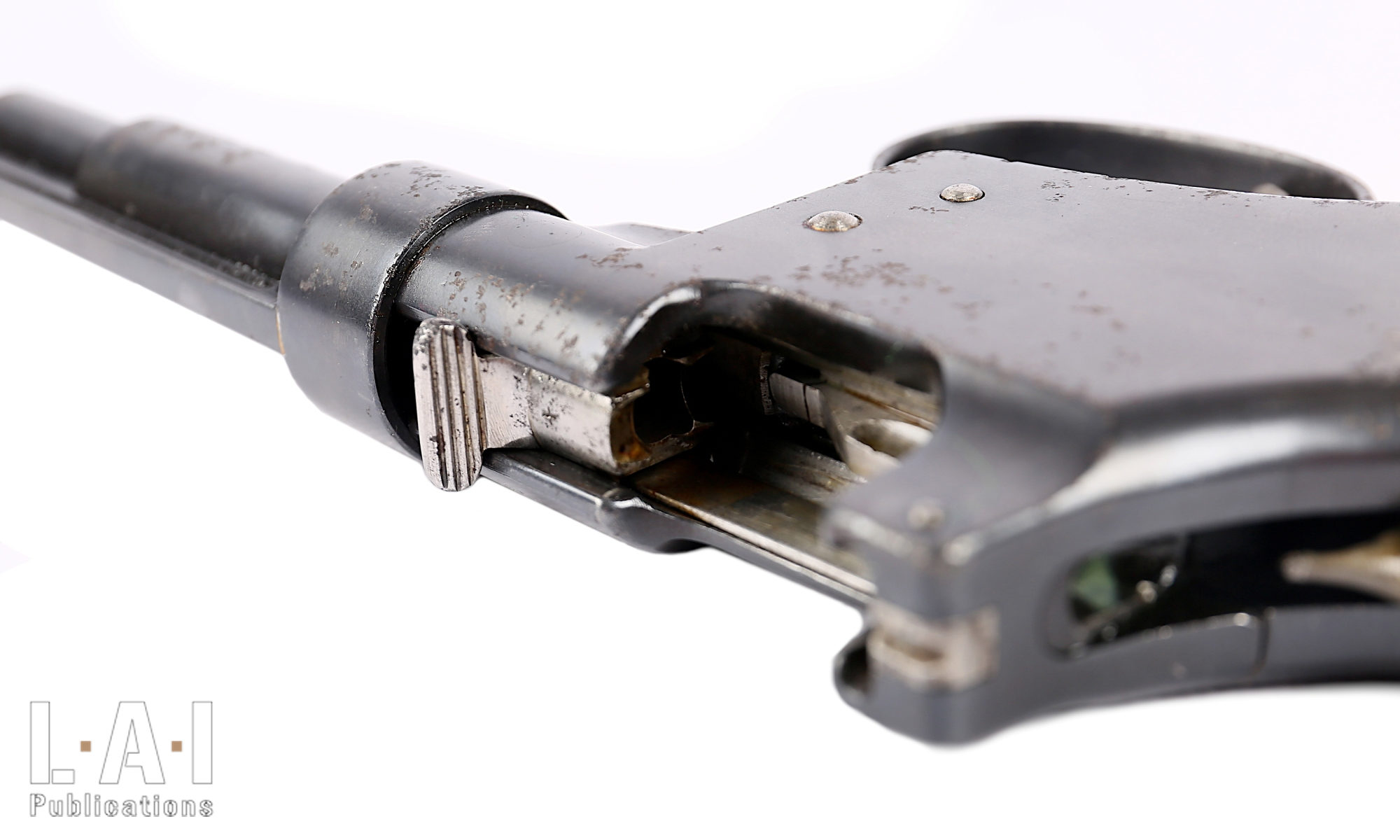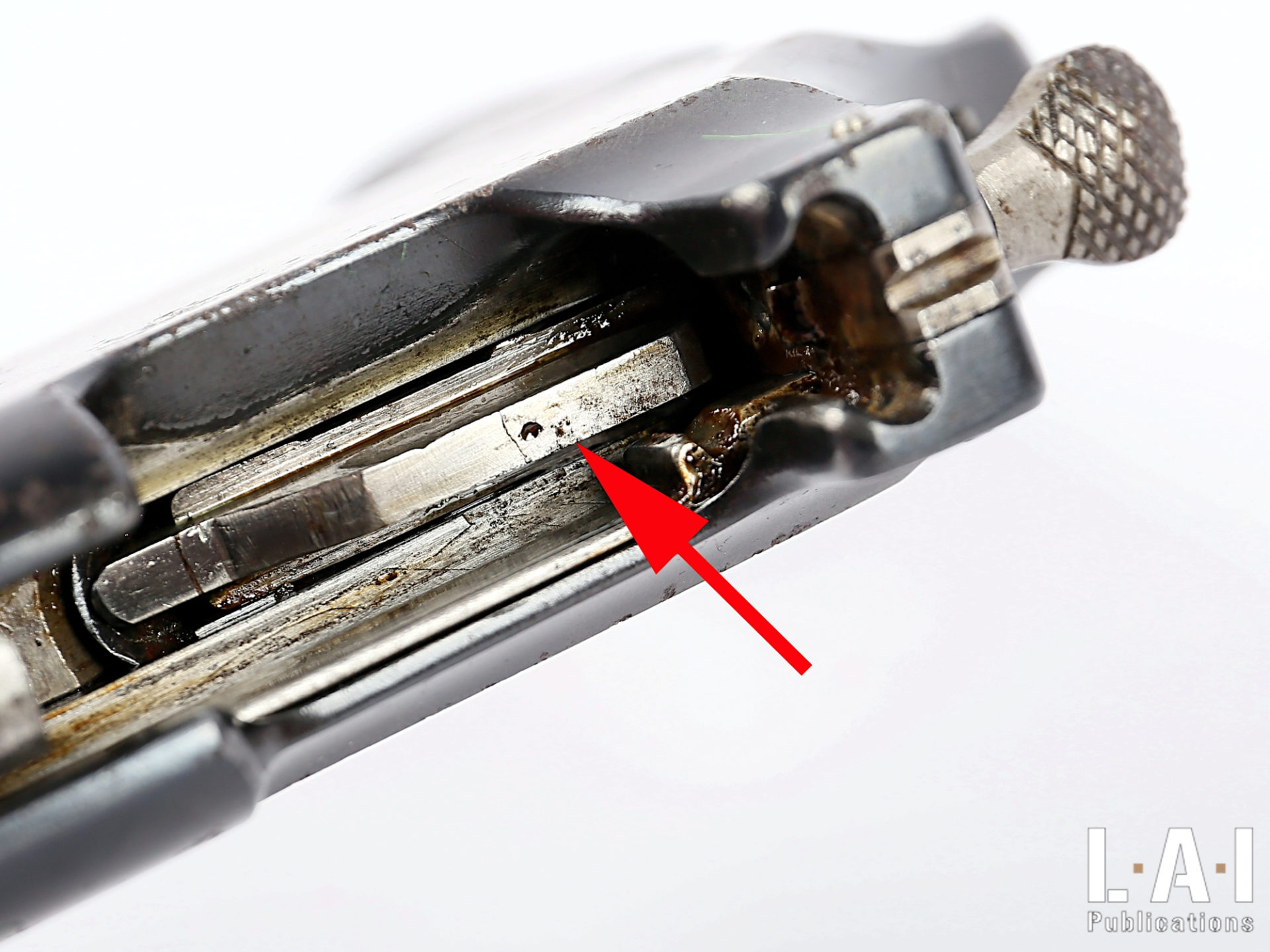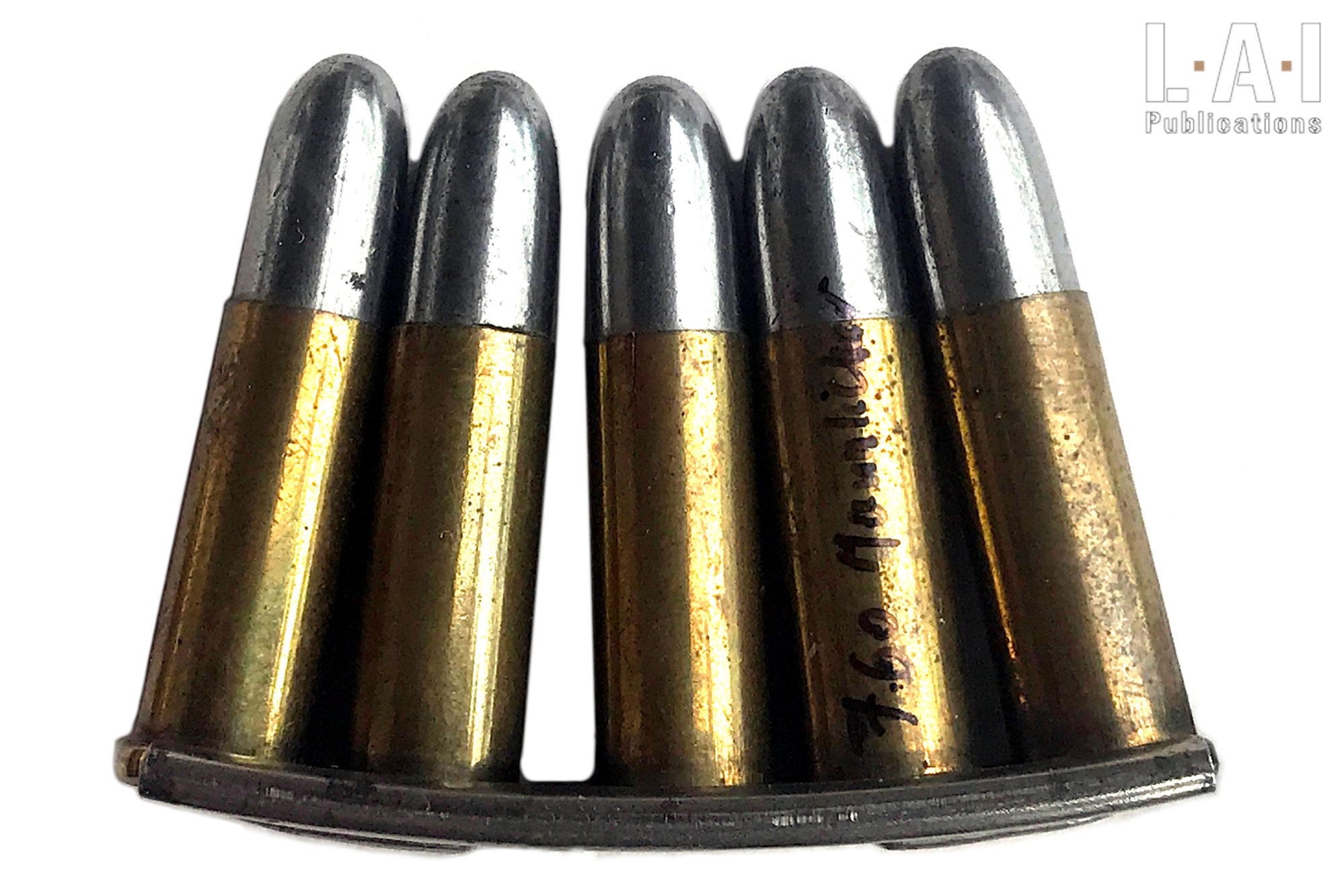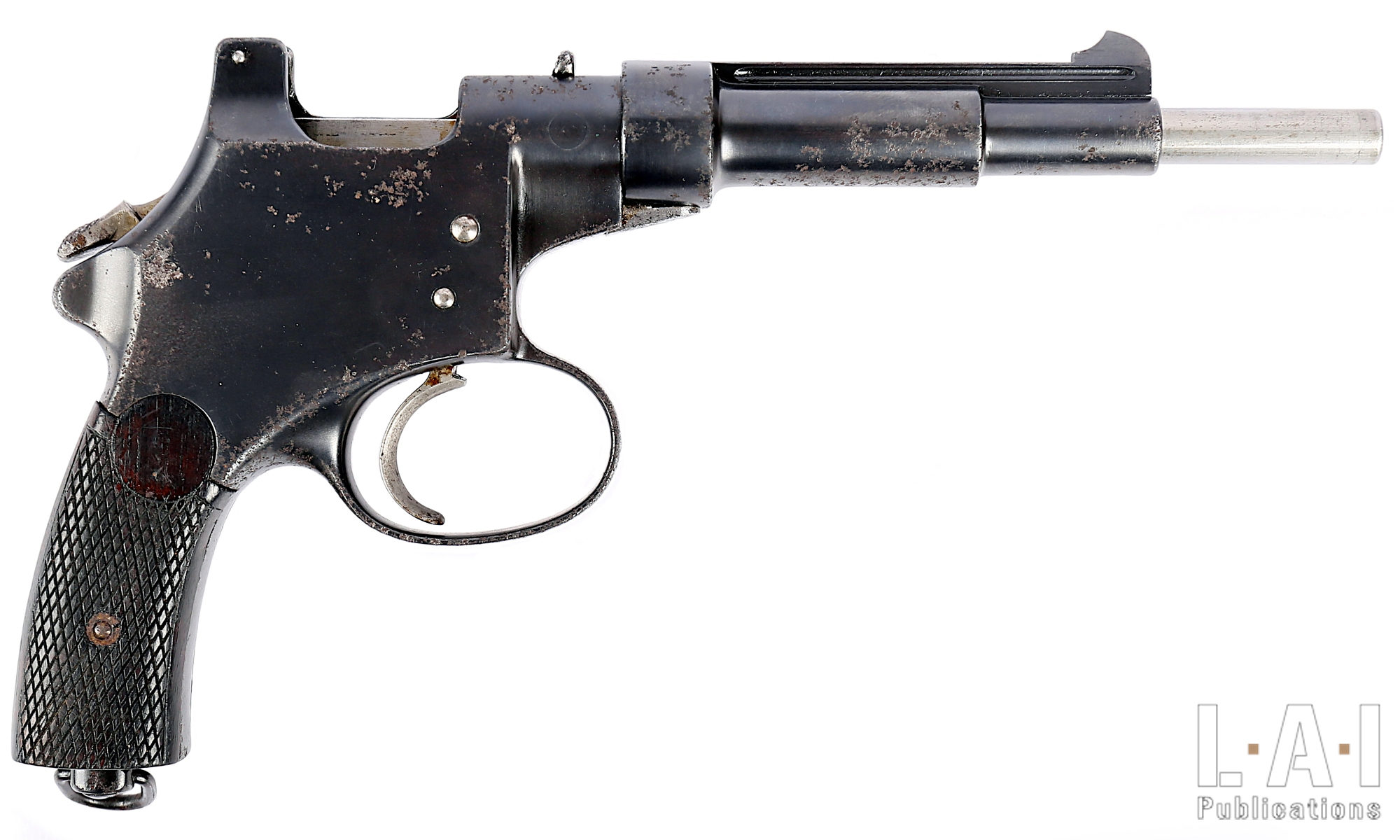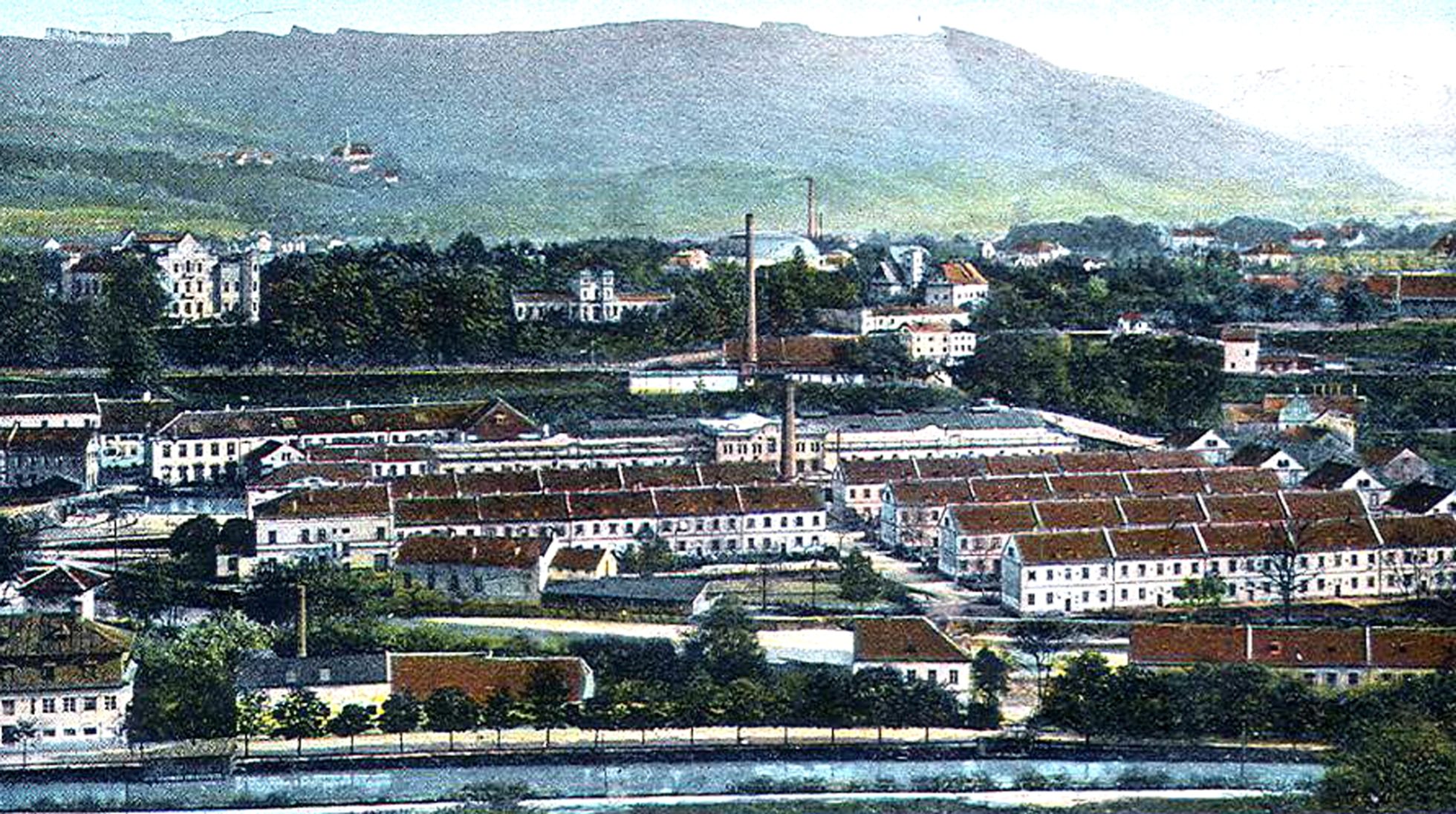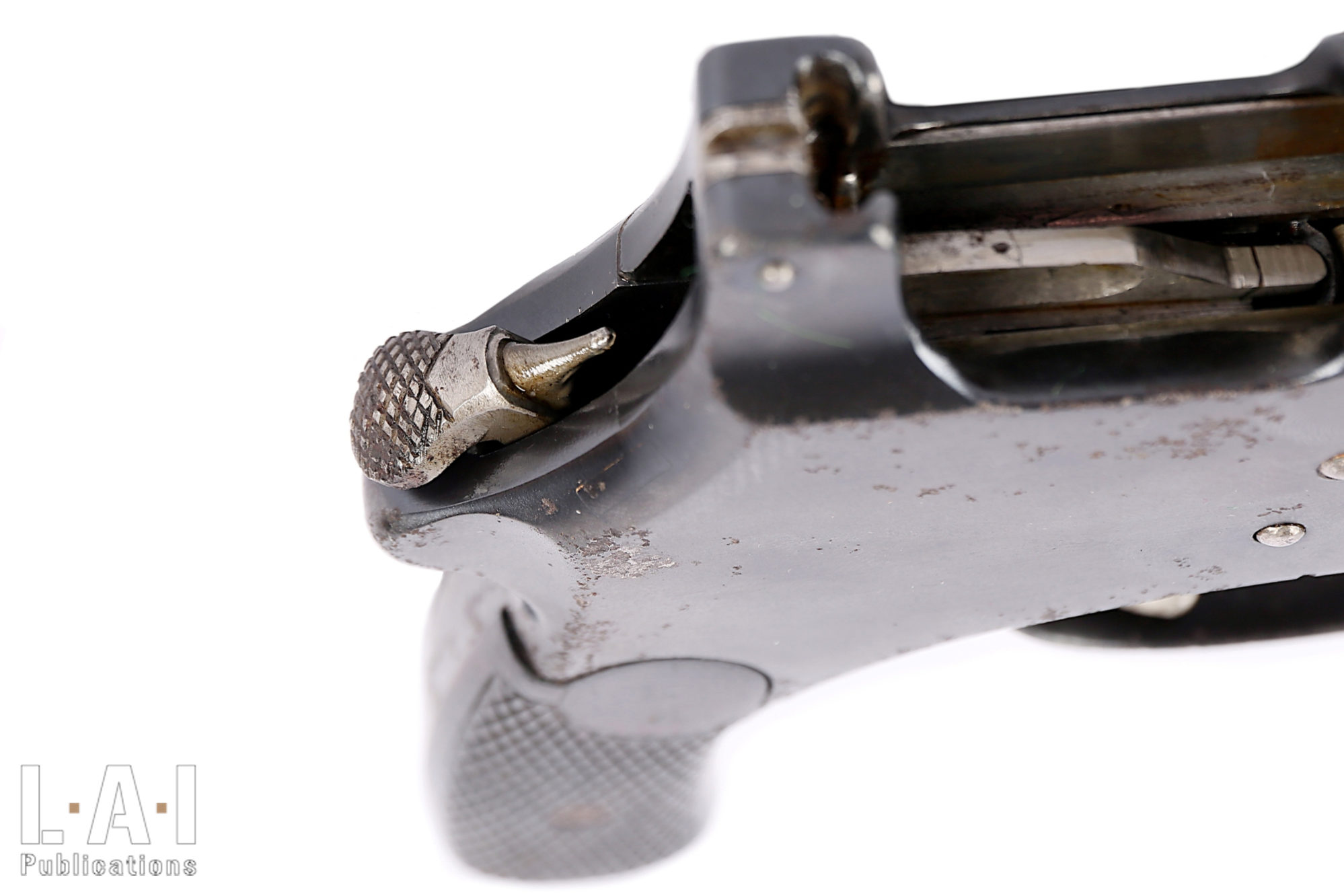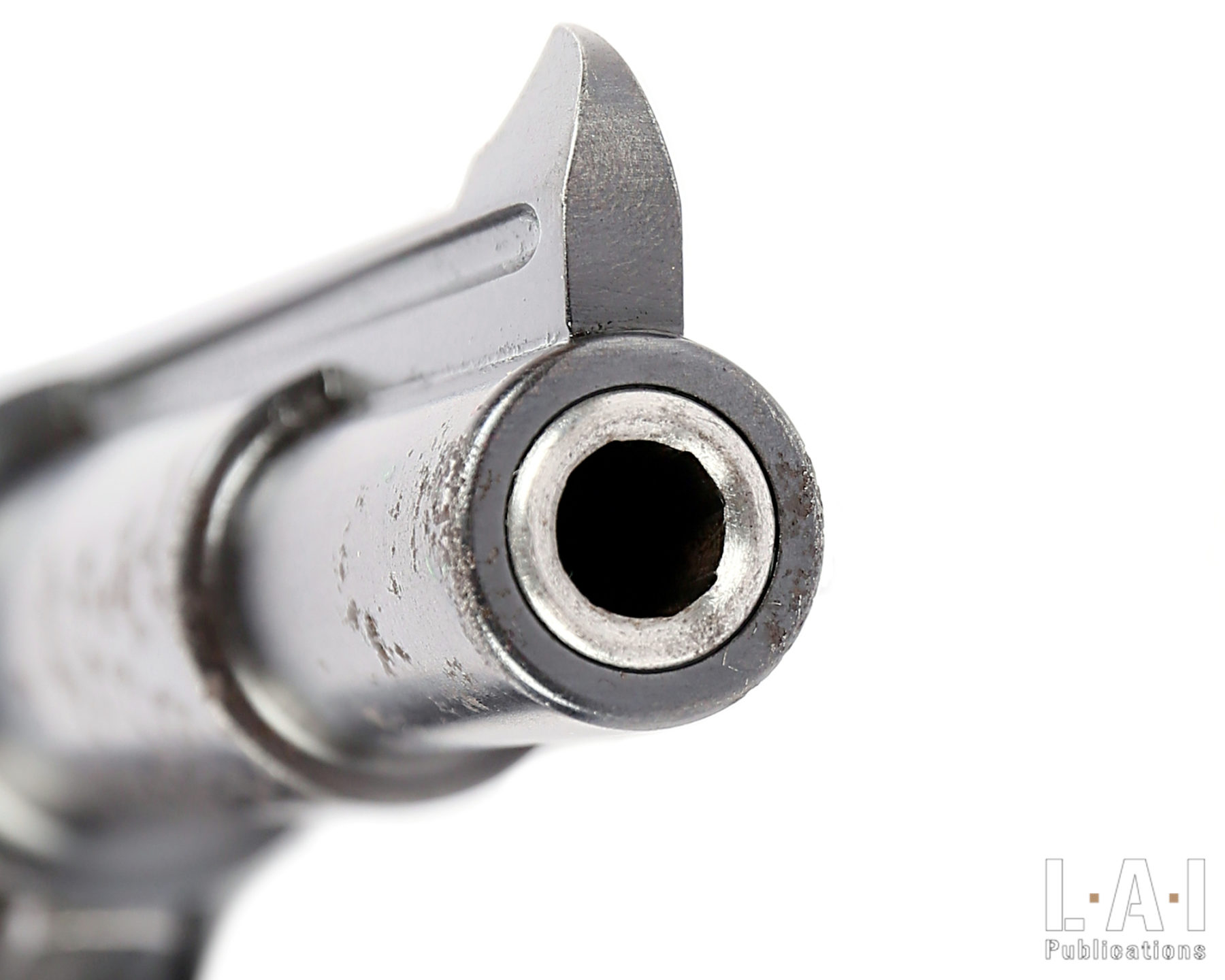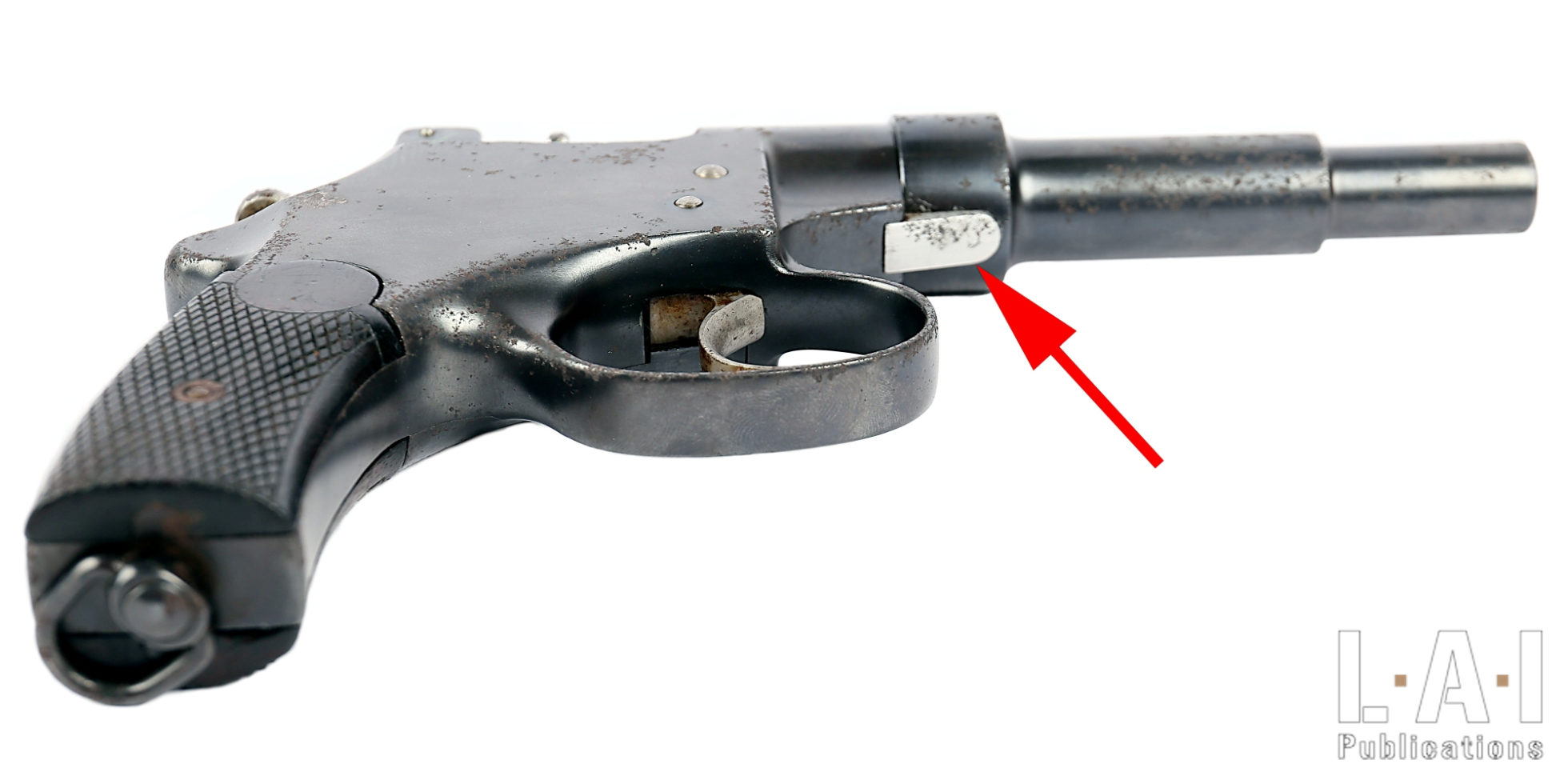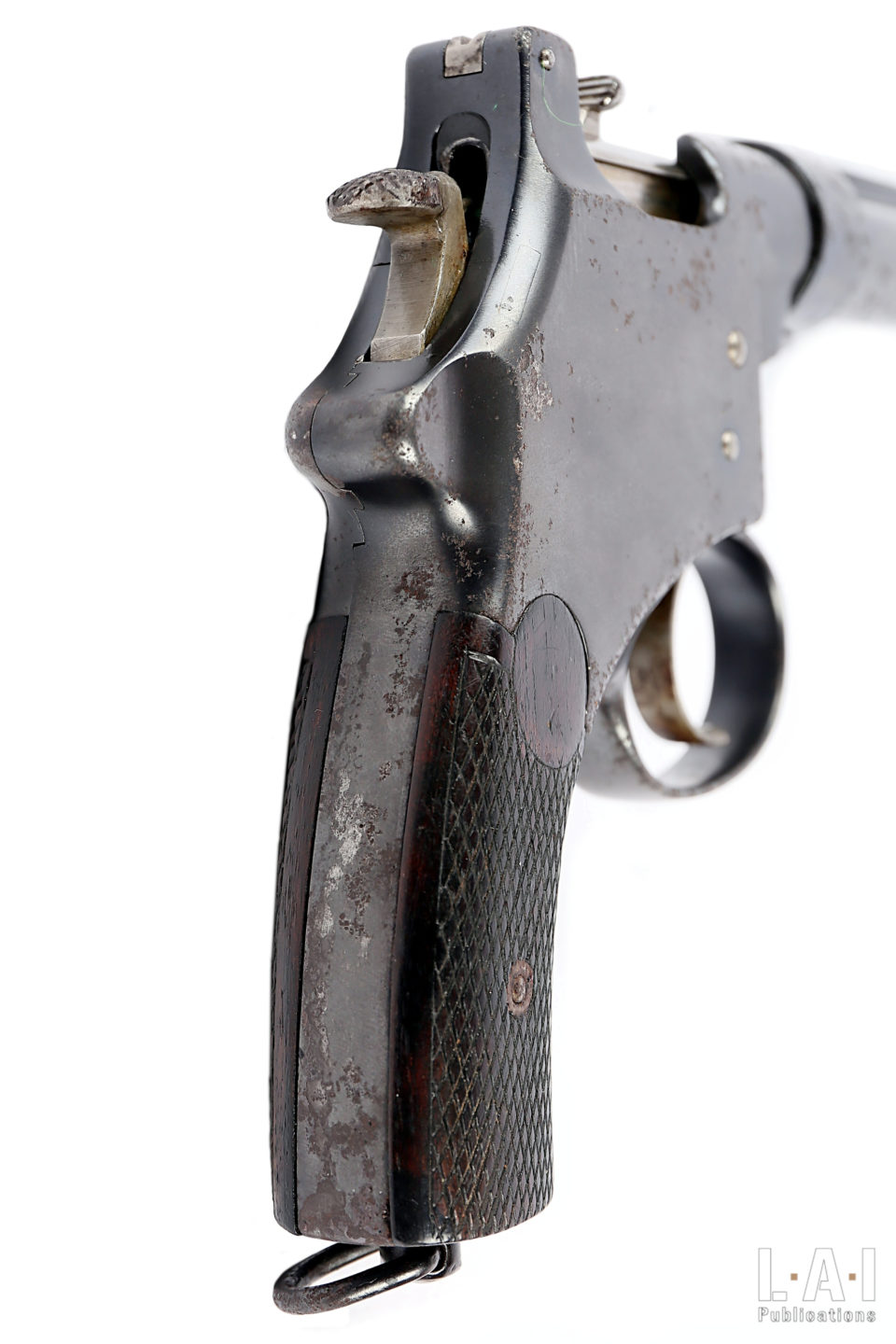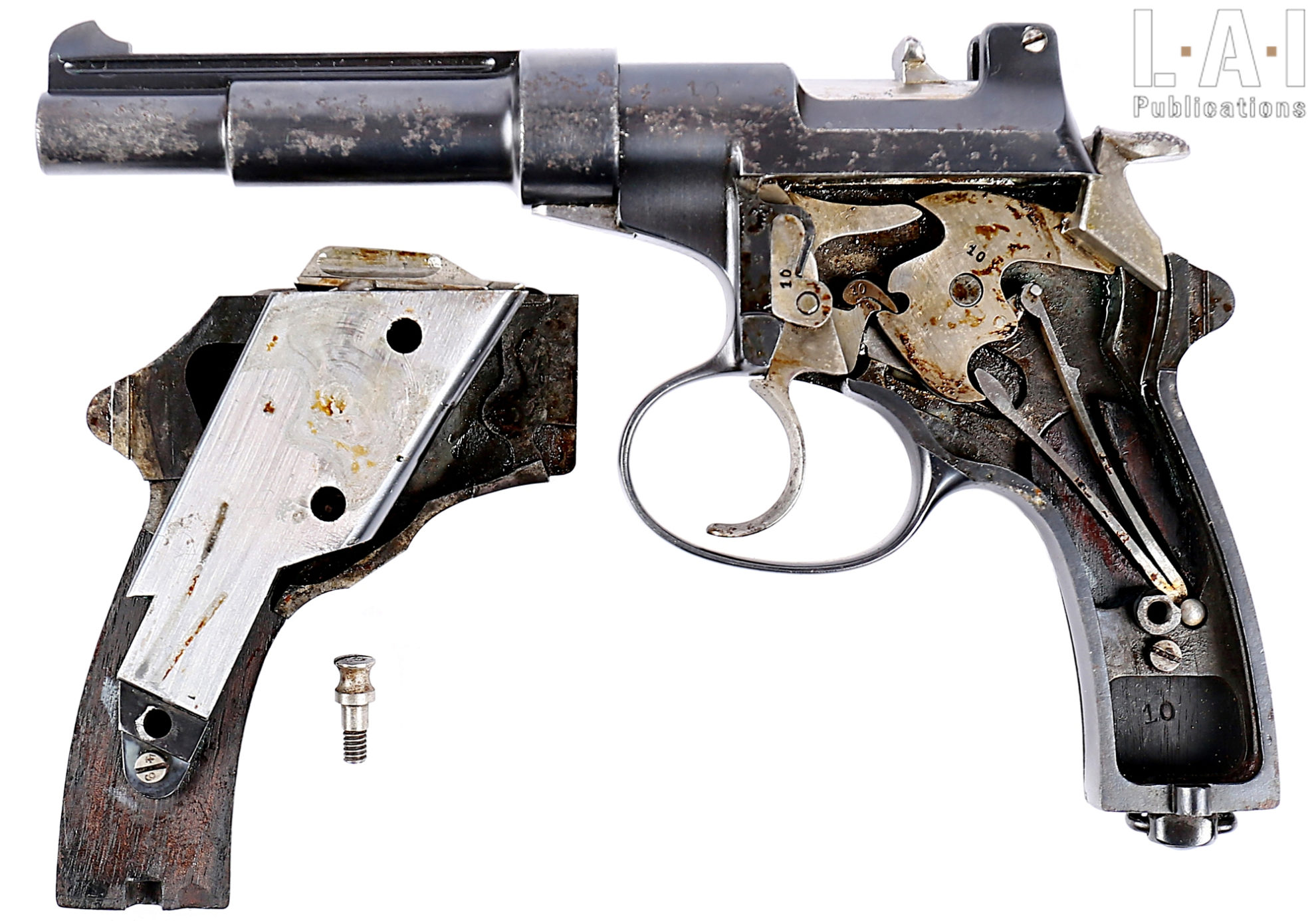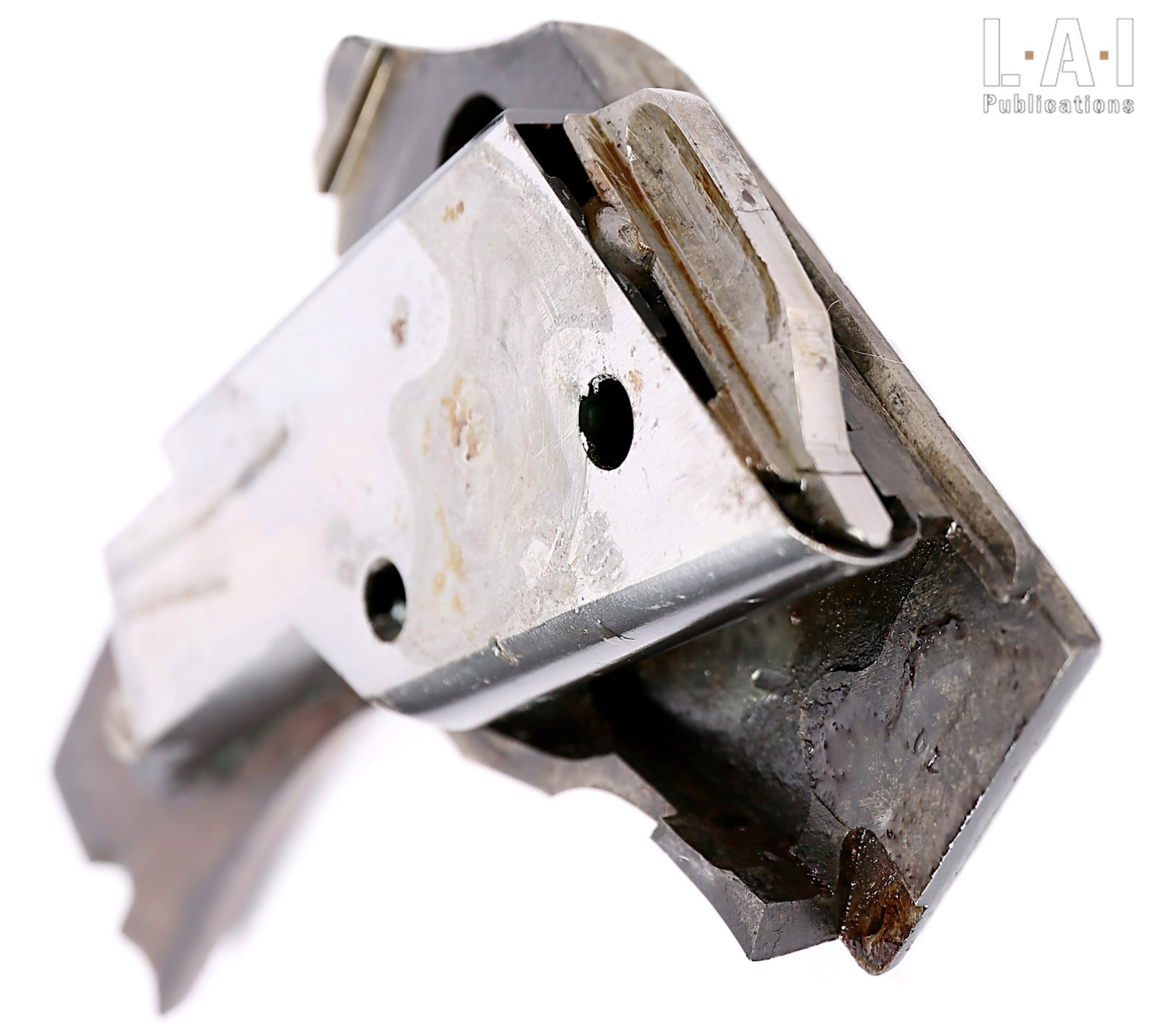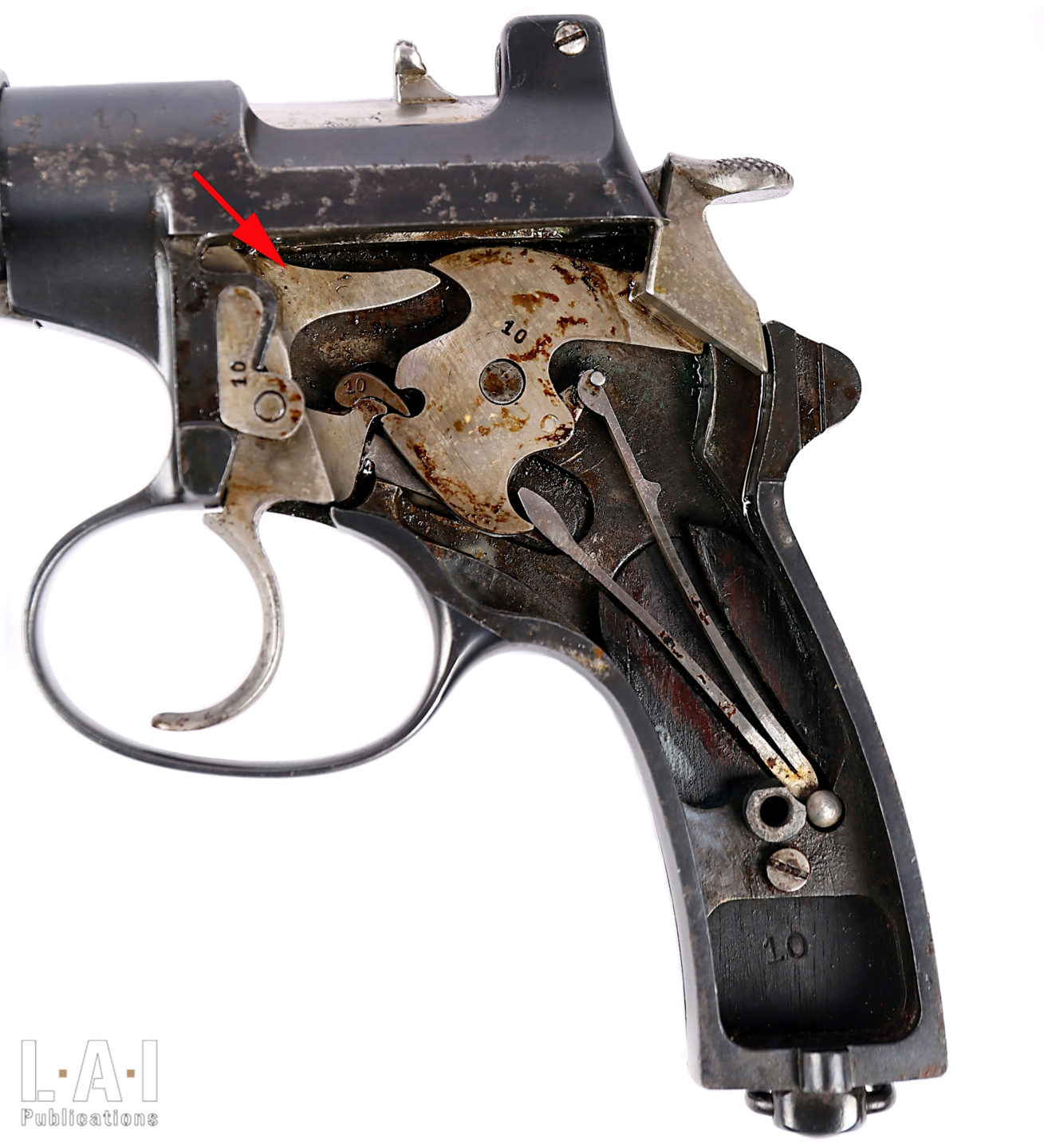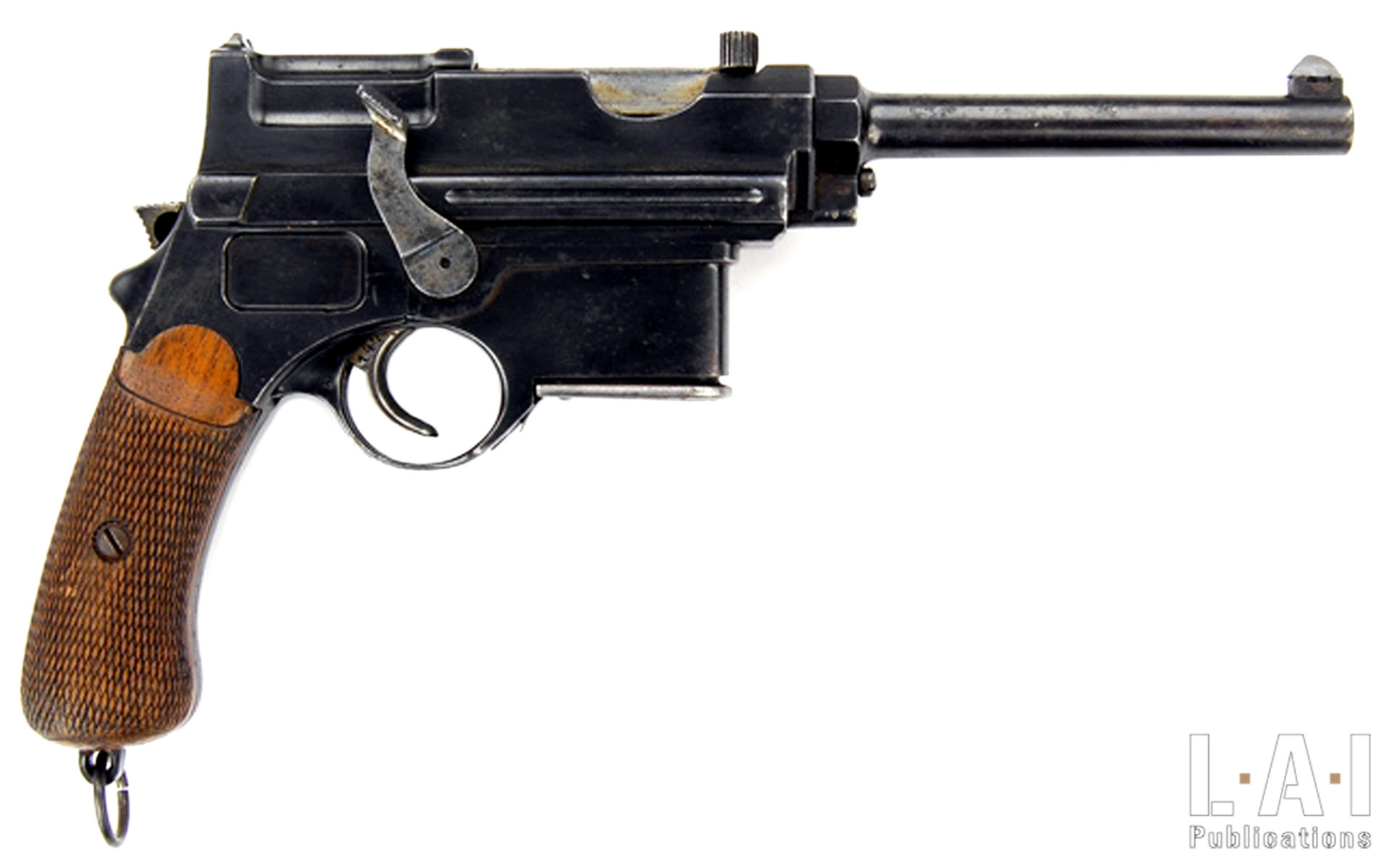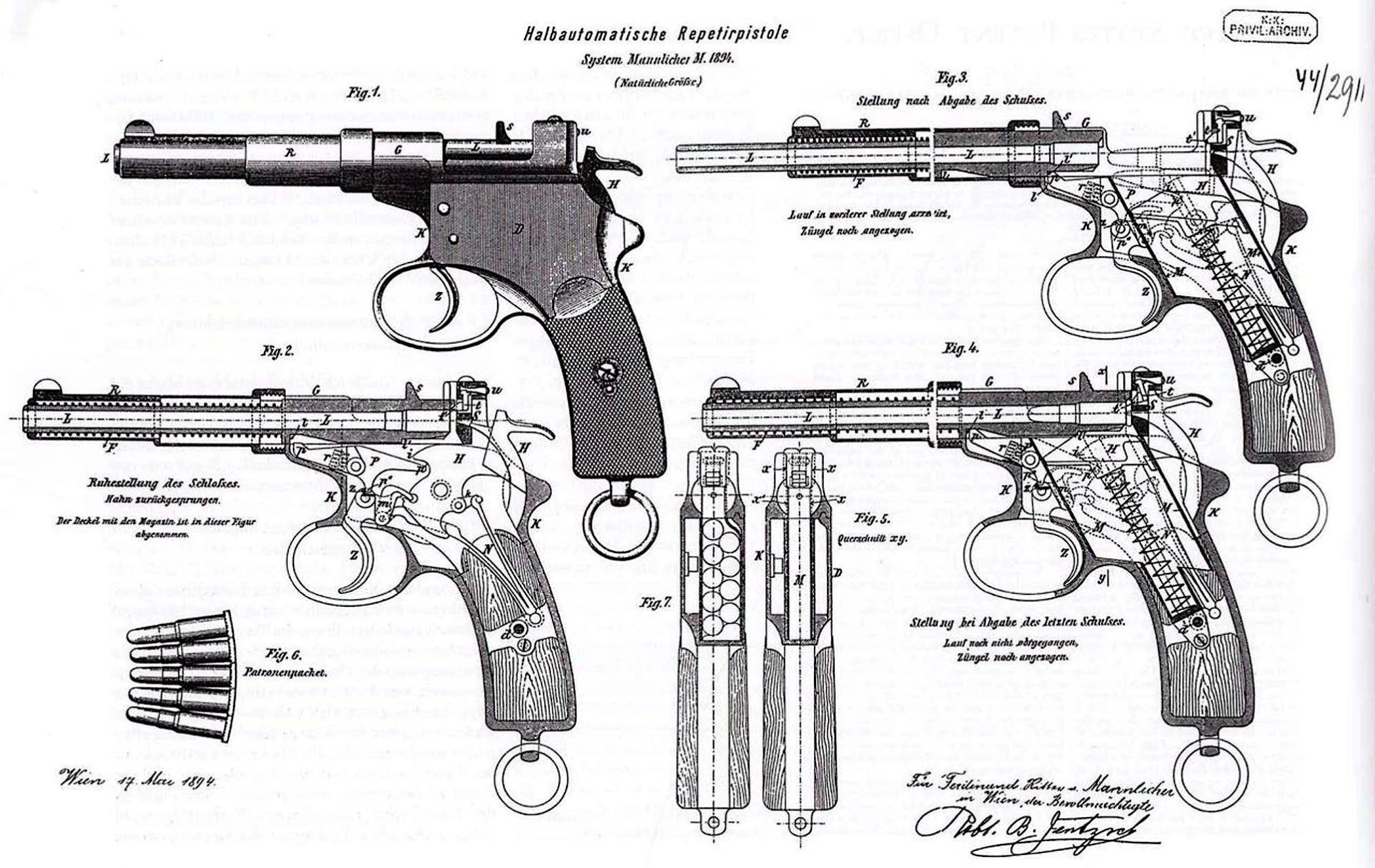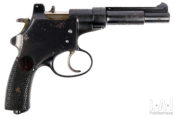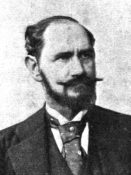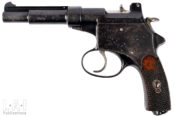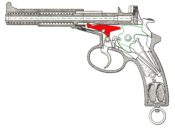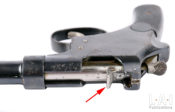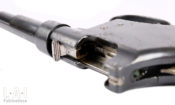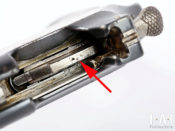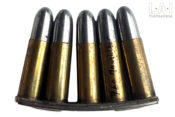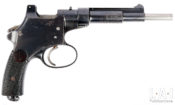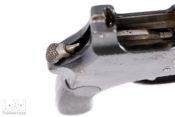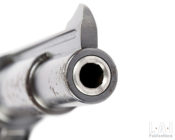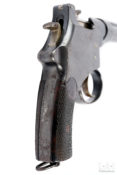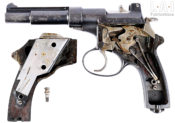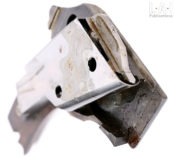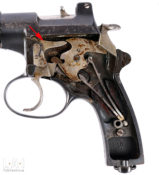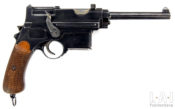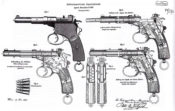Mannlicher Model 1894: A Journey into the Prehistory of Semi-Automatic Pistols

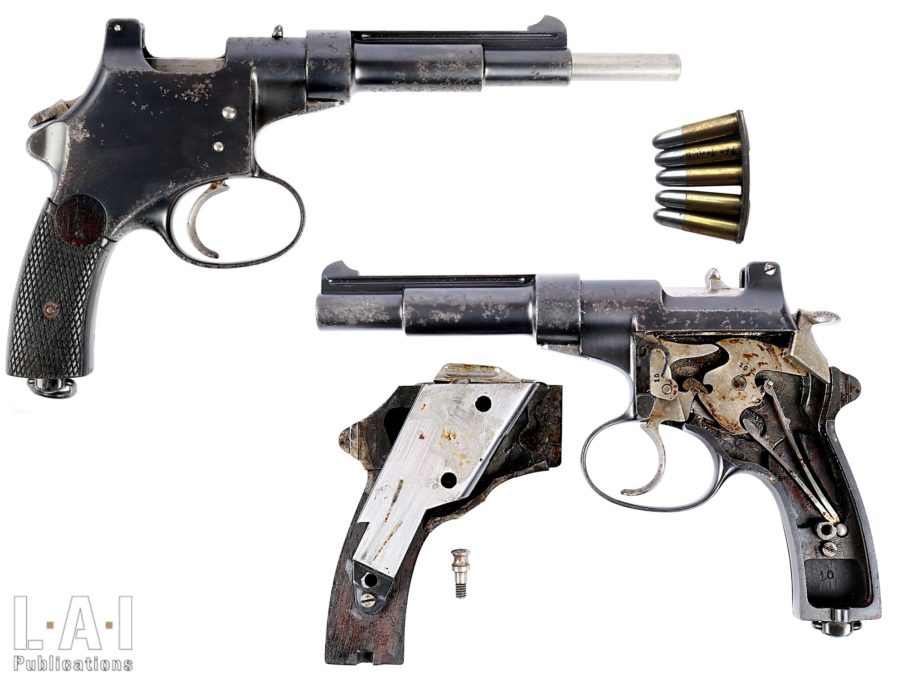
Article collectively written with Hervé Matous
From 1890 to 1900, advances in metallurgy and the advent of smokeless powders led to the emergence of many inventions in the field of both long guns and handguns. For the latter, novelties appeared especially in the field of semi-automatic pistols because gunsmiths and inventors sought to replace the revolver, by a thinner and faster to reload weapon. In a few years, we saw the multiplication of promising projects developed by Hugo Borchardt, Paul Mauser, Andreas Schwarzlose and by an extremely fruitful and talented inventor: Ferdinand Mannlicher (1).
A prolific inventor
The Austrian engineer Ferdinand Mannlicher had become famous by designing the vertical magazine repeating rifles loaded by an en-bloc clip.
After the advent of smokeless powder cartridges, he set out to create semi-automatic repeating pistols. Ferdinand Mannlicher is undoubtedly one of the pioneers of the semi-automatic pistol because between 1893 and 1905 he filed a patent for a semi-automatic pistol model almost every year.
The first DRP patent No. 79090 registered on December 12th, 1893, was apparently not concretized by an industrial manufacture and the “Mannlicher model 1893” does not seem to have make it past the prototype stage.
However, the drawings of this patent show that this weapon was operated by the advance of the barrel when firing (blow-forward), under the effect of the friction of the bullet. This surprising principle of operation would also be adopted by Andreas Schwarzlose for his 1908 model pistol. The feeding was provided by a fixed magazine, placed in front of the trigger guard, as on the Mauser C.96.
A few months later, Mannlicher filed a new German patent covering the mechanism of a new pistol, still blow-forward operated with the barrel inside a fixed sleeve, but this time fed by a magazine housed in the handle and no longer in front of the trigger guard. The latter provision enabled to reduce the total length of the weapon while allowing the use of a barrel whose length is almost as long as the weapon itself. The German patent was supplemented by the filing of several other patents: in the United States, Great-Britain, and then in the main European countries (France, Belgium, Sweden, Italy, Hungary and Switzerland).
Unlike the previous pistol (sometimes called the 1893 model), the Mannlicher model 1894 was manufactured, which included several series. The pre-series weapons featured a double-stack magazine containing 10 cartridges on two staggered columns: a unique feature for a handgun of that time. These weapons could be chambered in either 7.6×24 mm R or 6.5×23 mm R Mannlicher. Some pistols were delivered with an additional barrel, allowing to pass from one caliber to another.
As the double-stack magazine probably did not give full satisfaction, this arrangement was abandoned on the models of the first series production, in favor of a classic single stack magazine of five cartridges.
The Austro-Hungarian army carried out an evaluation of the weapon in 7.6 mm caliber during the summer of 1894. The tests were disappointing, however, as the cartridges were then loaded with smokeless powders that were not yet fully developed. After firing, the cartridges left a lot of unburned residues, which eventually blocked the mechanism.
Proper operation was only achieved when the cartridges could finally be loaded with a new powder supplied by Dynamit Nobel. The good operating results obtained at the time encouraged the Austro-Hungarian army to continue its evaluations of semi-automatic pistols and to move from 1895 to the stage of troops’ trial and to publish a manual for the use of the weapon.
The Swiss Army also took an interest in the Mannlicher model 1894 as part of its evaluations of semi-automatic pistols to replace its Model 1882 revolvers. For its tests, the Swiss army had a few dozen Mannlicher pistols model 1894 manufactured by the Neuhausen arms factory, whose mark was affixed to the right side of the weapon’s frame. Pistols tested by Switzerland were chambered in 6.5 mm caliber. Some of the pistols in the Swiss tests were equipped with a safety pedal placed at the back of the handle.
Implementation of the 1894 model
To load the pistol, it was first necessary to position the trigger at the rear: as it controls the barrel hold open lever. This can be accomplished in two ways:
- Simply cock the hammer: the trigger is then found in the rear position on the sear. The thing may seem risky from a safety point of view; however, it should be noted that the barrel hold open lever also act as a safety: its interaction with the hammer prevents the protrusion of the firing-pin as long as the barrel is not in the closed position.
- Pull the trigger until you fully operate the firing mechanism and then hold the pressure on the trigger. As strange as it may seem, it appears that this is the method envisaged by its creator when one looks at some drawings of that era that describes the weapon.
After this first maneuver, the user pushes the barrel forward, until it attaches to the barrel hold open lever, located above the trigger (red piece in Pic. 04).
The shooter then inserted a stripper clipDevice containing ammunition and intended to supply a weapon... More into the guide at the top of the receiver and pushed the five cartridges inside the magazine. Once the five cartridges are fed in the magazine, the clip is removed from the guide. The ammunition is held in the magazine by the lower part of the extractor blade housed on the left side of the receiver. This extractor consists of a strong leaf-spring whose nature recalls the Mauser 98s’.
The shooter can then let the trigger return forward: either by carefully pulling the hammer down, or by releasing the trigger if it was under pressure after triggering the firing mechanism prior to loading. The return forward of the trigger then causes the barrel to return under the action of its recoil spring.
During this recoil movement, the barrel chambers the first cartridge, the elasticity of the extractor allowing to release the cartridge as it enters the chamber.
To fire, the shooter had to either cock again the hammer or exert a long pressure on the trigger: the weapon then operating in double actionThe "double action" is a trigger mechanism where the action ... More. Because of the significant pressure that had to be exerted on the trigger in double-action, it was recommended to hold the pistol with the index finger of the strong hand above the trigger guard, to press the trigger with the middle finger of the same hand and to firmly grip the handle with the last two fingers.
To shoot in simple actionSystème de mise à feu ne permettant pas l'armement complet... More, the hammer was cocked with the thumb of the right hand and a pressure on the trigger was enough to release it, so that it came to hit the primer of the first cartridge.
As soon as the ammunition is fired by the hammer, the barrel advances at the same time as the bullet. Presumably, the different forces at work (mass of piece, friction…) are exploited to allow an opening once the bullet has left the barrel. This opening must in any case happen on the inertia of the barrel because it cannot take place as long as the pressure is too important.
While the barrel is moving forward, the empty case is held at the rear by the extractor. As soon as it is fully extracted from the chamber, the case is ejected on the right by the elasticity of the extractor and by the rise of the next cartridge. It is noted that the rear part of the chamber is slightly opened on the right to allow the ejection of an unfired ammunition, which is longer than a spent case. Fun fact, between shots, the barrel remains in the forward position until the shooter releases the trigger. Thus, it is possible to reload the weapon without any other maneuver than the introduction of an ammunition (or a new stripper clipDevice containing ammunition and intended to supply a weapon... More if the weapon is empty) after each shot. Contrary to what would often be encountered later, the empty magazine does not control the holding open of the mechanism.
It is noted that the hammer is not automatically cocked with each shot. Single action shooting thus systematically requires the prior cocking of the hammer. The weapon has a bouncing hammer associated with a half-cocked notch, which makes it possible to transport a chambered weapon and hammer at rest safely.
Conclusion
Austro-Hungarian tests, such as tests carried out by the Swiss Army and later (around 1900) by the American Army, resulted in the rejection of the 1894 model. It seems that about 200 Mannlicher model 1894 were manufactured, of which about 150 by the Österreichische Waffenfabrik Steyr and the rest by the Swiss industrial company Neuhausen am Rheinfall (SIG). As early as 1895, Ferdinand Mannlicher renounced to the blow-forward operating principle and patented a new model of semi-automatic pistol with a fixed barrel and which operates from a blowback bolt. Finally, in 1896, he had a new semi-automatic pistol put into production: the 1896 model, on which many archaisms had been removed. Feeding was provided by a removable magazine placed in front of the trigger guard, for which he developed a rimless cartridge, promised to a certain future: the 7.63 mm Mannlicher.
Luc Guillou and Hervé Matous
(1) Some works refer to Ferdinand Mannlicher as “von Mannlicher” because the inventor, whose several weapons became service weapons in the Austro-Hungarian army, was knighted by Emperor Franz Joseph and then became the knight (Ritter) von Mannlicher.
This is free access work: the only way to support us is to share this content and subscribe. In addition to a full access to our production, subscription is a wonderful way to support our approach, from enthusiasts to enthusiasts!
Characteristics:
Calibers: 7.6 or 6.5 mm
Cartridges: 7.6×24 R or 6.5×23 R Mannlicher
Total length: 230 mm
Barrel length: 185 mm
Weight: 960 g
Magazine capacity: 5 cartridges
Thanks:
The authors thank the Auction House VASARI AUCTION 86 Cours Victor Hugo 33000 Bordeaux www.vasari-auction.com for the provision of the Mannlicher 1894 pistol and pictures.
Sources:
“Vom Ursprung der Selbtladepistole” by Joseph Mötz and Joschi Schuy” – edited by the authors.


